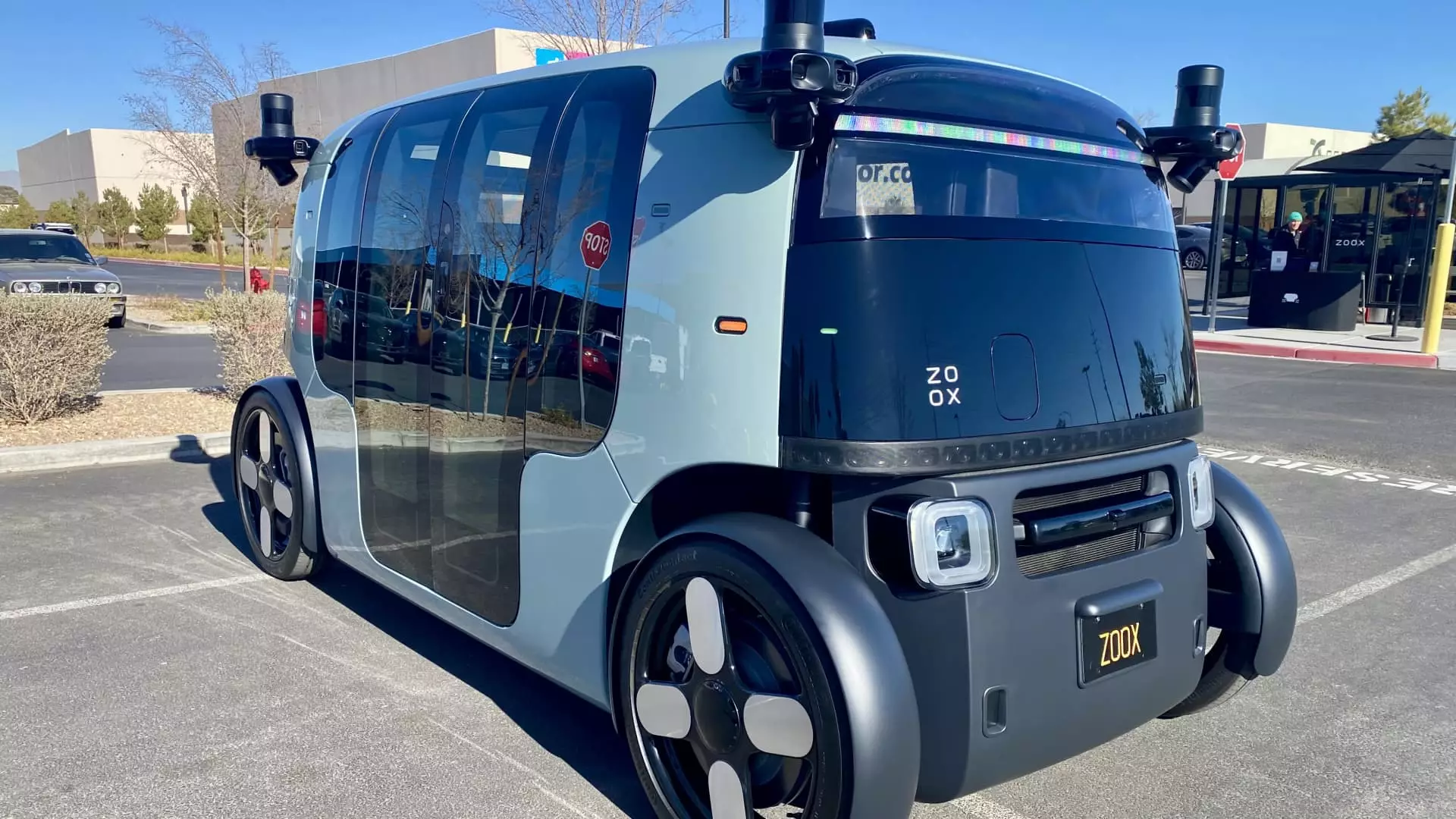As the landscape of autonomous vehicles continues to unfold, Amazon’s robotaxi division, Zoox, is gearing up for a pivotal year. After being acquired by Amazon for $1.3 billion in 2020, Zoox is on a mission to launch its autonomous ride-hailing service while expanding its operational foothold. The company has ambitious plans to introduce its people-mover vehicles to the public, testing the waters in cities like Las Vegas, San Francisco, and Foster City. However, the road ahead is fraught with obstacles, especially given the skepticism surrounding autonomous technologies and the challenges faced by competitors in the same arena.
What sets Zoox apart from others in the autonomous vehicle sector is its unique design philosophy. The robotaxi has been conceived from the ground up without traditional driving components like steering wheels or pedals. This innovative approach may appeal to consumers desiring a futuristic transport experience, although skeptics have mockingly referred to these vehicles as “boxes” or “toasters.” Despite the mixed reviews regarding aesthetics, Zoox aims to differentiate itself from competitors such as Waymo, which employs retrofitted conventional vehicles for its self-driving initiative.
Jesse Levinson, co-founder and CTO of Zoox, has expressed optimism about their progress, noting the operational capabilities demonstrated during tests in Las Vegas. Even as the company faces pressure from investors and an industry that is experiencing a paradigmatic shift, Zoox remains committed to offering a transformative travel experience.
Zoox has undertaken extensive public road trials to refine its technology. During recent test drives around Las Vegas, the robotaxis exhibited commendable navigation and decision-making skills. However, the vehicle’s performance raised some questions, particularly concerning its hesitant maneuvers in complex traffic scenarios. While maintaining a cautious approach is essential for safety, the balance between assertiveness and defensiveness remains a significant hurdle. Levinson argues that achieving this equilibrium is crucial to ensuring that the robotaxi can safely share the road with human drivers, who frequently exhibit unpredictable behavior.
The vehicle’s design, which focuses on passenger comfort with opposing seat arrangements, reflects an understanding of user experience in autonomous transportation. However, the real test lies ahead: transitioning from controlled testing environments to accommodating the dynamic, often chaotic nature of urban driving.
Despite Zoox’s technological aspirations, the broader industry context presents challenges. Major automotive players like General Motors and Ford have shuttered their autonomous divisions, citing high operational costs and regulatory hurdles. Companies such as Cruise, once regarded as key competitors, have faced setbacks, notably following regulatory scrutiny after accidents involving their vehicles. Amid such tumult, Zoox’s commitment to a “conservative and steady approach” underscores the importance of safety and regulatory compliance in its operational strategy.
Levinson has indicated that Las Vegas is poised to serve as the inaugural market for Zoox’s commercial activities. Plans are in place to launch an “Early Rider Program,” allowing selected customers to engage with the service before a broader rollout. While the company has aspirations to expand into cities like Miami and Austin, a clear timeline remains elusive, reflecting the unpredictability of the autonomous vehicle landscape.
While the technology involved in self-driving vehicles continues to mature, concerns surrounding viable business models persist. Autonomous vehicles have proven functional in many respects, yet the financial feasibility of operating robotaxi services is still under debate. Industry experts, including Sam Abuelsamid from Telemetry Insights, have pointed out that the quest for sustainable profit margins in the robotaxi market could be a stumbling block for Zoox and its peers.
The original hype around transformative autonomous ride-hailing services has tempered dramatically since the height of enthusiasm in the late 2010s. The costs associated with the deployment and maintenance of these fleets are becoming increasingly clear. Yet, if Zoox can effectively navigate these obstacles, it may carve a niche in a sector where many have stumbled.
As Zoox gears up for public trials and commercial operations, the path is fraught with uncertainties brought on by previous industry missteps and evolving consumer expectations. The blend of innovative technology with practical viability will be paramount. While others have fallen by the wayside, Zoox’s unique designs and commitment to progress may catalyze a new chapter in autonomous vehicle history.
Nevertheless, as they prepare to launch, the challenges laid out will require meticulous planning and execution. Whether Zoox can rise to the occasion and emerge as a leader in the autonomous market remains to be seen, but their efforts certainly exemplify the relentless pursuit of innovation in an industry that continues to evolve.

